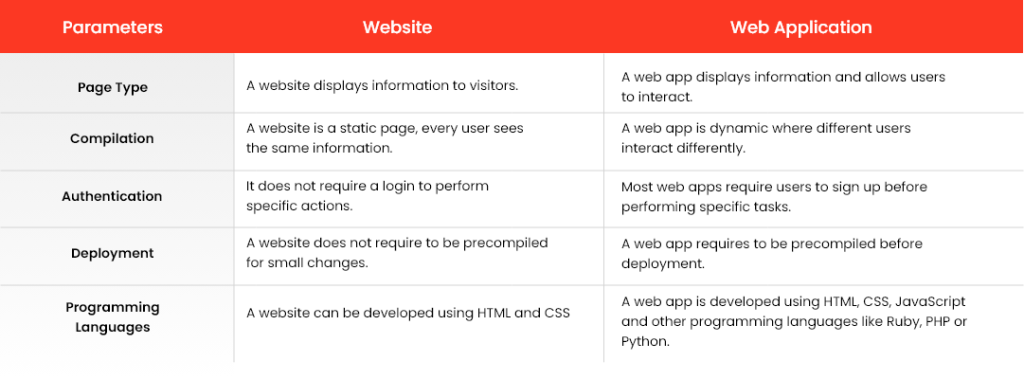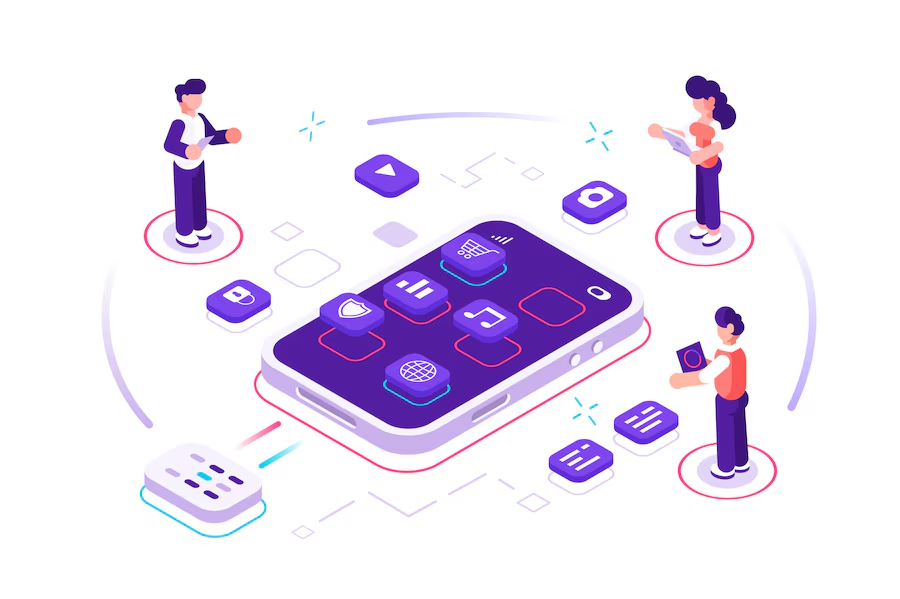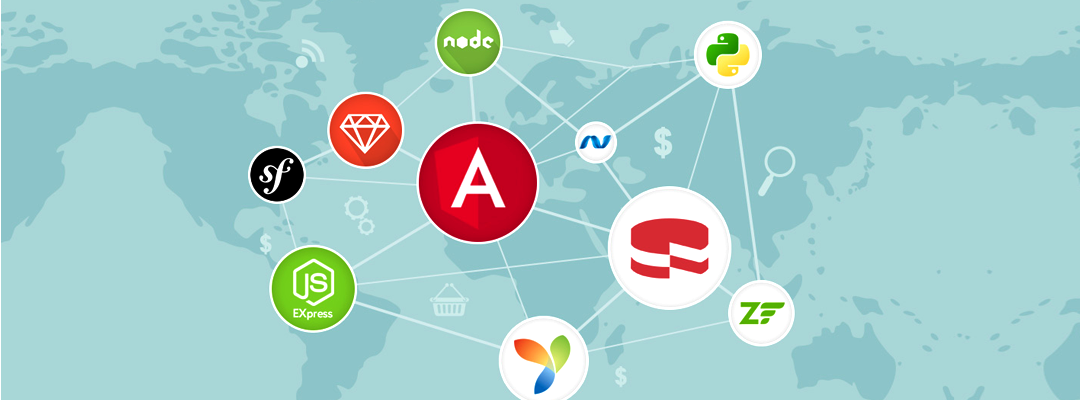Introduction
Web application development has come a long way since the early days of the internet. In the past, web applications were static, and pages would often take a long time to load. Today, web applications are much more dynamic and responsive, thanks to advancements in technology and the rise of custom web application development for providing game-changing features, outstanding security, and memorable user- experiences. Now the question arises, what exactly are web apps and how are they developed?
This blog intends to shed some light on web applications and their development process. After you are done reading this blog, you’ll have a better understanding of what steps are involved in developing a web application and you’ll be able to make an informed decision about whether or not investing in a web application is the right option for your business.
What Is a Web Application?
A web application is computer software that performs operations via the Internet by utilizing web browsers and web technologies. In simpler words, it is an interactive application that can be accessed through a web browser. The demand for web applications is increasing very rapidly as they not only help businesses streamline their operations but also provide an exceptional user experience to customers with ongoing application support and maintenance in the long run.
How Is a Web Application Different from a Website?
The below table explains the further differences between a web app and a website.

Web Applications Development
The process of building interactive programs that operate on web servers and are accessed via a web browser is known as web application development. Typically, developing a web application entails identifying the issue, modeling a potential solution, contacting users, selecting a framework or tool, and then developing and evaluating the web application, often simultaneously with users.
Steps Involved in The Development Process for Web Applications
The web app development process requires exactly 8 steps to be followed which are:
1. Identify the Issue You Are Attempting to Resolve
Identifying the key issue that you plan to solve with the development of a web app serves as a compass to direct you on the right track. The solution can only be derived if the problem is clearly defined. Everything needs to have a purpose otherwise it’s of no use.
2. Configure Your Web Application’s Lifecycle
A web app development life cycle provides a strategically developed technique for successful performance. Therefore, you must set up the entire lifecycle of your web app from creation to retirement.
3. Create A Wireframe/Web Application Prototype

Consider the wireframe to be the “sketch” or “blueprints” for the app, encompassing both the front and back ends of how the app will look and function. Hence, your wireframe serves merely as a tool for explaining your solution to your intended users.
By incorporating more functionality into the generated wireframes, the finished prototype can look and operate just like a genuine web app. This prototype may be used and tasted, with responsiveness and improved UX features that imitate the user experience, providing vital insight on performance, design, and user experience prior to complete development.
4. Pick Your Weaponry
You will create your web application using a variety of platforms, tools, and frameworks. It’s crucial to select the right instrument for the task (in this case, your web application) and avoid following trends. For a simple to-do app, for instance, Django and React might be excessive.
5. Establish A Database for Your Web Application
The database is in charge of gathering, saving, analyzing, and controlling data collected, as well as giving protected access to this data. Throughout this domain, the choice is quite simple, with two MySQL practically monopolizing the database market, with other possibilities like MongoDB and PostgreSQL.
6. Frontend & Back-End
Both your front end and back end will probably be constructed at the same time. Your front end will largely resemble the prototype or wireframe that you evaluated earlier. HTML, CSS, and JS make up the front, similar to one of our front-end frameworks.
One of the most challenging aspects of developing a web application is creating the backend. The main responsibilities of the backend are to serve the front end, authenticate users, grant access, and provide HTTP endpoints for your front end (note CRUD!).
7. Examine Your Website’s Application
The process of testing your web application is continual and typically occurs both during and after the building stage. Testing can be carried out manually or automatically. You ought to make an effort to address functionality, usability, compatibility, security, and performance testing during the testing phase.
8. Host and Release Your Web App
Running your web application on a server is known as hosting. A domain must be purchased, and a cloud hosting company must be selected. You will need to implement a CI tool to transfer your web application from your local computer to your cloud provider and deploy it.
Tools And Technologies Used in The Development Process for Web Applications
JavaScript, CSS, and HTML go hand-in-hand when it comes to custom software development. Although it may seem difficult at first; understanding web technology and how it functions, though it gets easier once you know what you’re doing. Do not worry if it does not come to you immediately. To dig more into web and mobile app development, you might need more time, experience, and endurance, but gradually, you’ll have a thorough grasp.
You’ve heard the phrase “web development technology,” but have you considered what it means? Because computers cannot speak with one another in the same manner that humans do, they must rely on codes. The markup languages and multimedia applications that computers use to communicate are known as web technologies.
1. Browsers
Browsers request information and then display it to us in an understandable manner. Consider them to be web interpreters. Some of its examples are:
Google Chrome – Google’s cross-platform web browser.
Safari- A graphical web browser developed by Apple.
Firefox – A free and open-source web browser created by the Mozilla Foundation and its subsidiary, the Mozilla Corporation.
2. HTML and CSS
One of the first things you must learn is HTML. HTML tells web browsers what to display when they encounter a request. If you want to grasp how HTML works, you must also understand CSS. CSS is an abbreviation for Cascading Style Sheets, which describes how HTML components should be rendered on the screen. If you read enough tutorials, you’ll be able to build CSS text effects, page transitions, picture hover effects, and other effects in no time.
3. Frameworks for Web Development
Web development tools are objects that a developer can leverage to avoid performing effortless or tiresome chores and instead get right to work.
These tools are Angular, Ruby on rails, Meteor JS, Express.js, Zend, Django, and Laravel.
4. Programming Languages
Computers need a particular means of communication since, as we previously discussed, they don’t employ languages that are even somewhat similar to human languages. The most widely used programming languages are JavaScript, CoffeeScript, Python, Ruby, PHP, Go, Swift, and Java.
5. Protocol
Protocols are the rules that specify how data should be transferred between computers and other devices. REST, HTTP, and DDP are a few examples.
6. API
Other programmers can use a portion of the app’s functionality with the help of an API (application programming interface) without having access to the code. The APIs developed by Facebook, Twitter, and Google for their web services are good examples of well-made APIs.
7. Data Formats
A data format is a framework used to store data. For example, JSON, XML, and CSV.
8. Client
A client is any user of a program. Clients might include tablets, laptops, and other electronic devices. Typically, the same program stored on a server is being used by several clients at once.
9. Provider
Typically, the server is where the application code is kept. The servers receive requests from the clients. After gathering the needed data, the servers then react to those requests.
Conclusion
The key for businesses to boost their online presence is to use inventive web applications because when it comes to generating ROI, web and mobile application development are often more significant than website development. The explanation is simple, a website primarily provides information about that specific business or corporation. A web application, on the other hand, is a little more intriguing as it not only delivers information but your visitor can also interact with it resulting in a better user experience. Hence, businesses are now more inclined toward web app development rather than official websites.
The web app market is continually growing to absorb new and emerging technologies due to its untapped potential. Modern trends continue to shape the model of new sorts of web apps designed to meet the expanding demands of their targeted users. If you want your business to have a competitive edge in terms of providing next-level customer experience, improving ROI, or the ease of expanding into new markets, you must give the web app a fair chance. Making this decision might not be as easy as it seems. However, you need not worry because our experts at Golpik are readily available to guide you about web applications and how they can aid your business growth.
To develop an even better understanding of web apps, don’t forget to check out our following comprehensive blogs:
- 10 Reasons Why Your Business Needs Custom Web Application Development
- An Ultimate Guide to Building Scalable Web App for Your Business
- Avoid These Costly Mistakes During Web Application Development








